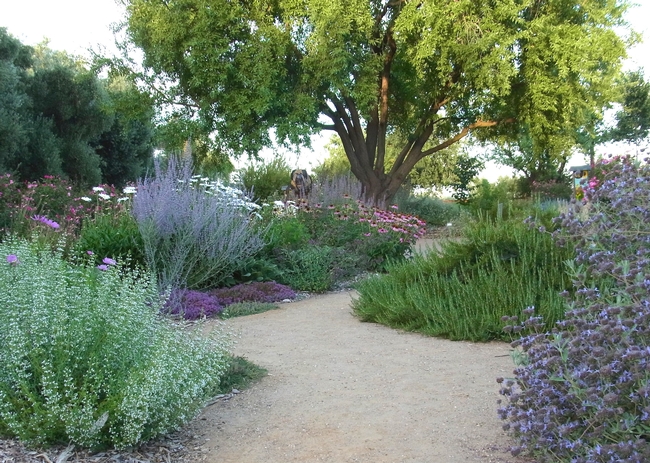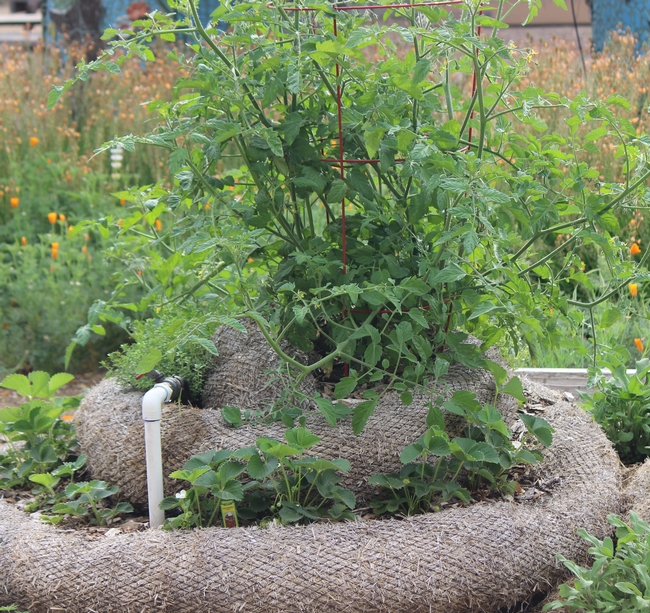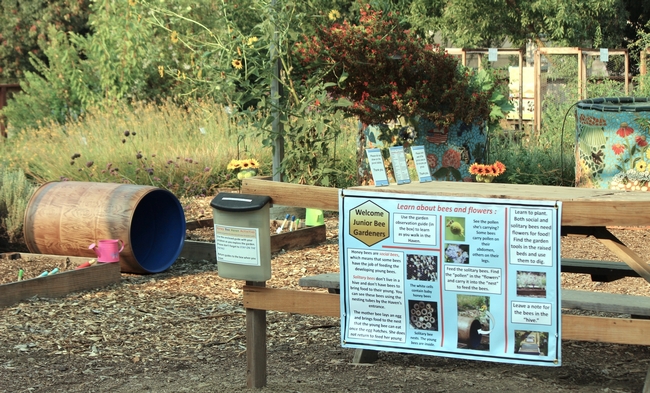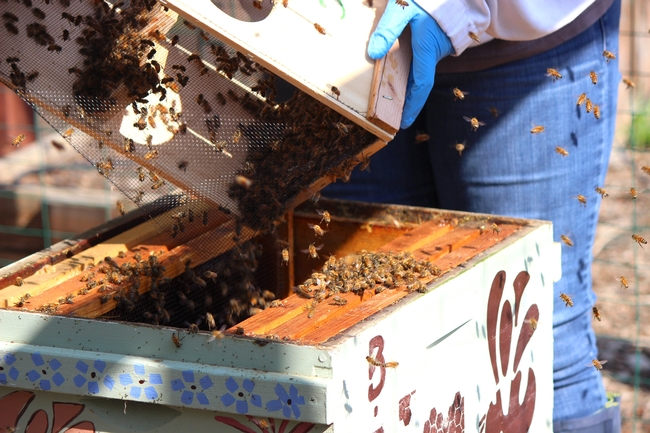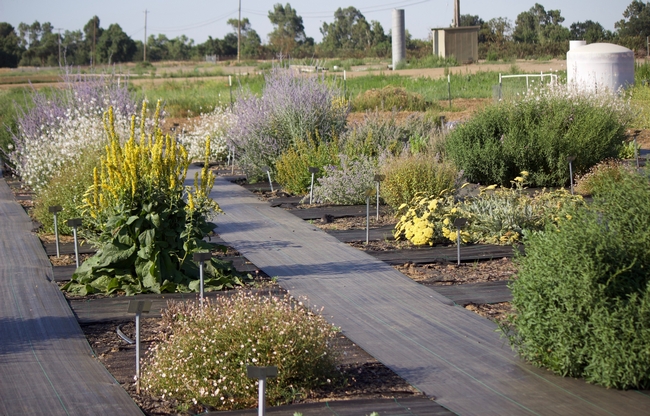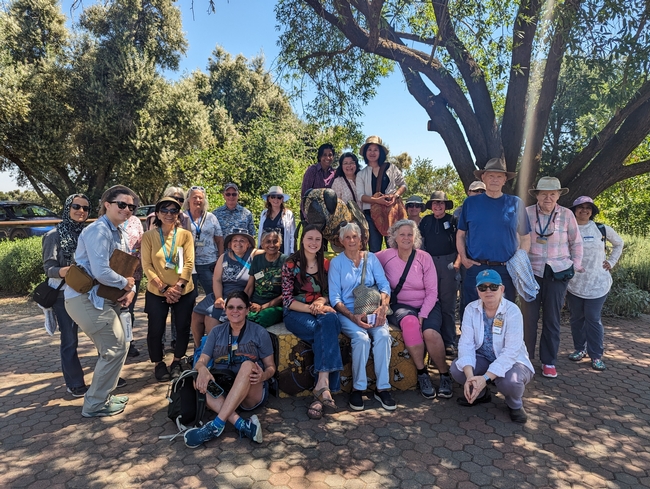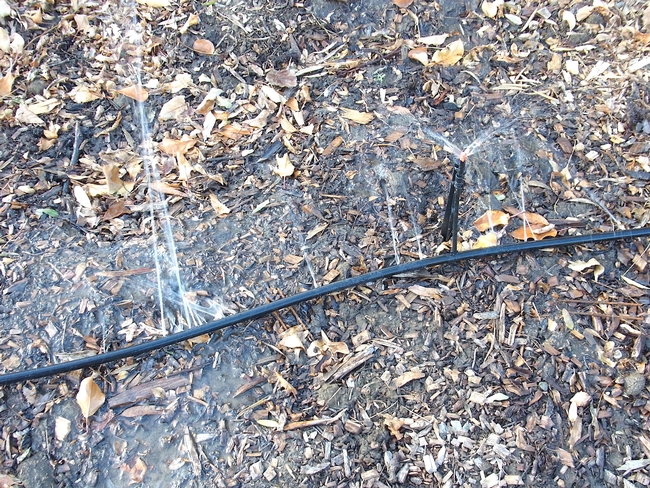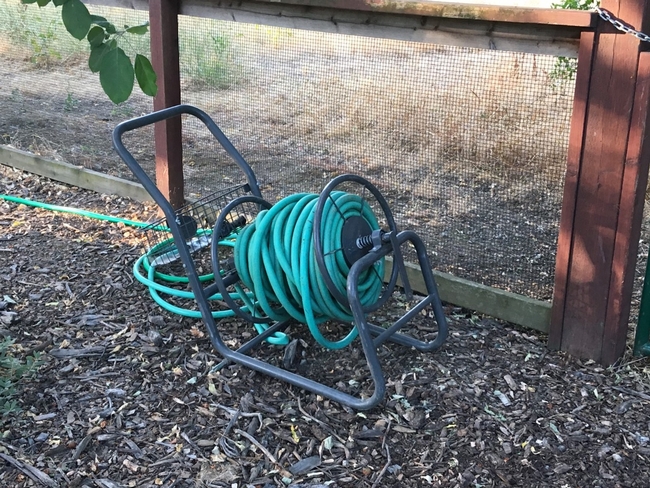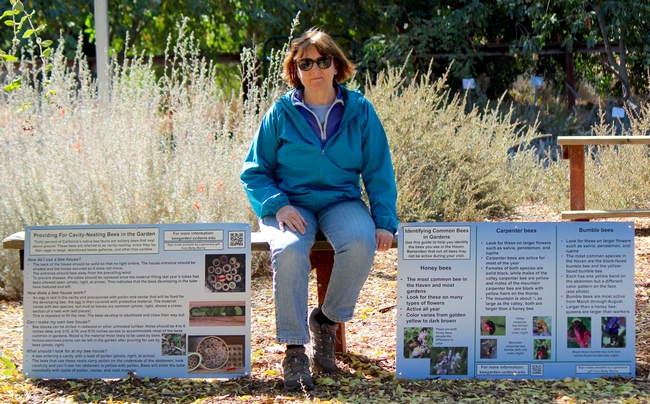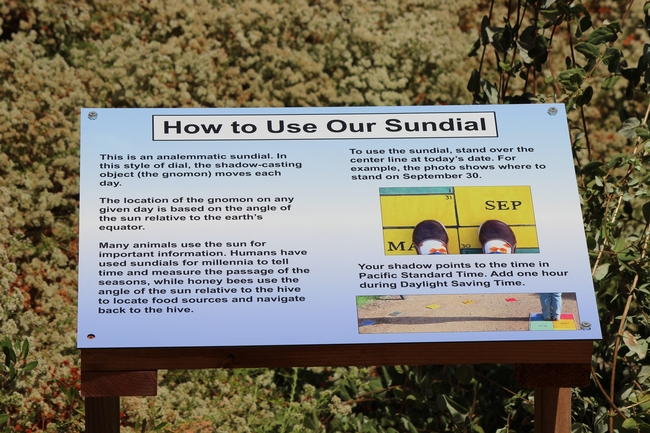It began with an idea forged by Häagen-Dazs and UC Davis. Recognizing a need for the public to better understand the link between bees and our food supply, the garden was created in Spring 2009 thanks to a donation from Häagen-Dazs. Working in partnership, a team led by Missy (Borel) Gable of the California Center for Urban Horticulture, the UC Davis Department of Entomology, and Häagen-Dazs developed and judged a design competition and made the garden happen.
I came on board as a full-time manager in 2013 and added outreach programs; that year the Sacramento Bee named the Haven one of the region's top ten public gardens. Financial support from Häagen-Dazs and UC Davis continued until 2015, at which time the garden became self-supporting. A name change to the UC Davis Bee Haven in 2022 reflected this change and the garden's diversity beyond honey bees. Major grant funding and donations during this time came from the US Department of Agriculture's National Institute of Food and Agriculture, the California Department of Food and Agriculture, the Cygnet Foundation, the Woodland Sunrise Rotary, and the Sacramento Area Beekeepers Association. This support, and the time and funds from all donors, is greatly appreciated.
It's been a wonderful 15 years of information and inspiration about bees and the plants that support them. But all good things must end, and at the end of June my position as Haven manager is being eliminated. As described above, and unlike other campus museums, the Haven has never had a dedicated source of support: when grant funds run out, so do I. Regrettably, the last two proposals I've submitted were not selected for funding.
I've enjoyed meeting so many of you through teaching about bees and helping you with your bee gardens. Along with my position, this blog and other Haven outreach will come to an end. But the need for bee gardens goes on. If you're interested in continuing to learn about bees and other insects and how to support them in gardens, please join me on Instagram (@thebloomingbug) and YouTube (youtube.com/thebloomingbug). See you there!
Here are a few highlights from the Haven's history.
As Haven manager, I expanded on the initial garden design by adding more plants to ensure year-round bloom and to introduce visitors to lesser-known bee plants (left). Expansion included ideas about ways to provide for bees in small gardens, such as the use of a straw wattle coil to create a raised bed for vegetables (right).
Additions to the Haven included a children's learning area (left) and a bee hive (right). The children's area was removed during our first funding cut in 2019, as we no longer had the staff to maintain it. The hive remains thanks to staff at the Laidlaw Honey Bee Research Facility.
We moved into bee-plant research in order to obtain grant funding to support the garden. I enjoyed returning to my scientific roots and was proud to have the Haven run by bee scientists for bees. One of our research plots in shown on the left. Research informed our education programs, which included garden tours and classes. On the right is my last-ever tour group, the Santa Clara County Master Gardeners.
There were always challenges! Our top two were squirrels, which damage plant roots and garden irrigation (left), and theft, including shed break-ins and tool destruction (right; who steals the wheels off a hose reel?!?)
As mentioned in a previous blog, volunteers have been the life of the Haven. In addition to their hard work, they have been important donors. Betty Warne provided funding for interpretive signs (left), and Rick Williams designed and built our sundial (right). The dial is now in storage and will be re-installed in a new location.
Thanks to all our supporters for a great 15 years. Happy Bee Gardening!
